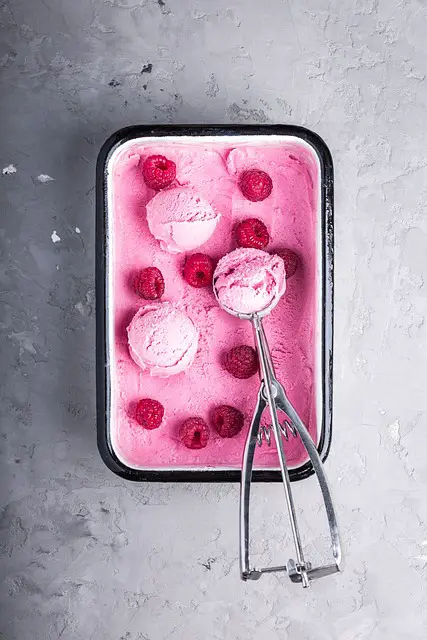Contents
- 1 Ice cream carton recycle
- 2 Paperboard and Plastic Harmony
- 3 The Importance of Cleanliness
- 4 The Positive Impact on the Environment
- 5 The Importance of Checking Local Recycling Guidelines
- 6 Separation of Materials
- 7 Impact on Successful Recycling
- 8 Reducing and Reusing Ice Cream Carton Waste
- 9 Small, Sustainable Choices Make a Significant Impact
- 10 Conclusion
Ice cream carton recycle
In a world increasingly focused on sustainable living, the importance of responsible waste disposal and recycling cannot be overstated. One often overlooked aspect of this eco-conscious lifestyle is the recycling of ice cream cartons. As delightful as that frozen treat may be, the environmental impact of the packaging shouldn’t be ignored.
Ice Cream Carton Recycling Unveiled
Ice cream carton recycling involves more than just tossing the empty container into the bin. The materials used and the proper disposal methods play a crucial role in reducing our ecological footprint.
Environmental Significance
The environmental ramifications of improper disposal are clear. From overflowing landfills to the pollution of oceans and rivers, our planet bears the burden of excessive waste. Ice cream cartons, often made from a mix of paperboard and plastic, contribute to this challenge. Recognizing the environmental importance of proper disposal and recycling is the first step towards positive change.
Posing the Central Question
As conscientious consumers, we find ourselves at a crossroads, facing the central question: “How can we contribute to sustainability through ice cream carton recycling?” This inquiry opens the door to a journey of understanding the intricacies of recycling these seemingly innocuous containers and, more importantly, contributing to a greener, more sustainable future.
In the sections that follow, we will explore the materials used in ice cream cartons, the significance of cleanliness in recycling, and practical steps to ensure that our ice cream indulgence aligns with our commitment to environmental responsibility.
Ice Cream Carton Materials and Composition
As we delve into the world of ice cream carton recycling, understanding the materials used in their composition is crucial. Ice cream cartons are typically crafted from a combination of paperboard and plastic, creating a packaging blend that poses both opportunities and challenges for sustainability.
Paperboard and Plastic Harmony
The common materials found in ice cream cartons are paperboard and plastic. The paperboard provides structural integrity to the carton, while the plastic lining serves as a moisture barrier, preserving the quality of the frozen delight within. This combination ensures that the ice cream remains fresh and scoopable while housed in a container that can withstand the freezing temperatures of your favorite frozen treats.
Potential Challenges and the Need for Awareness
While the paperboard-plastic combination contributes to the functionality of ice cream cartons, it introduces challenges to the recycling process. The fusion of these materials can make recycling more intricate compared to single-material containers. As responsible consumers, our awareness of these challenges becomes paramount.
Recycling facilities may face difficulties separating the paperboard from the plastic lining efficiently. The presence of these combined materials can potentially limit the recyclability of ice cream cartons. Recognizing these challenges prompts us to adopt a more informed approach to our disposal practices and encourages us to explore ways to mitigate the environmental impact of our indulgences.
In the upcoming sections, we will uncover the importance of cleanliness in the recycling process, explore local recycling guidelines, and provide practical insights into contributing to sustainability through ice cream carton recycling.
The Importance of Cleanliness
As we navigate the realm of ice cream carton recycling, one often underestimated practice takes center stage: cleanliness. The cleanliness of these containers before recycling is not merely a matter of etiquette; it’s a pivotal step towards enhancing the efficiency of the recycling process and, subsequently, making a positive impact on the environment.
The Rationale Behind Rinsing and Cleaning
Rinsing and cleaning ice cream cartons before tossing them into the recycling bin may seem like a small gesture, but it carries significant weight in the larger scope of waste management. The remnants of ice cream or any sticky residues left behind can complicate the recycling process. Clean containers, on the other hand, streamline the recycling journey, making it more efficient and effective.
Connecting Cleanliness to Improved Recycling Efficiency
A clean ice cream carton is like a blank canvas for recycling facilities. Without the interference of food residues, the recycling process can proceed with greater ease. The absence of contaminants ensures that the materials, particularly the paperboard and plastic components, can be more effectively separated and processed.
This improved efficiency not only benefits the recycling facility but also contributes to the overall health of the recycling system. It minimizes the risk of contamination in batches of recycled materials, allowing for the creation of higher-quality recycled products.
The Positive Impact on the Environment
The positive repercussions of prioritizing cleanliness in ice cream carton recycling extend beyond the walls of the recycling facility. An efficiently recycled ice cream carton reduces the demand for raw materials, lowering the environmental footprint associated with the production of new packaging.
By adhering to the practice of rinsing and cleaning, we actively participate in a cycle of responsible consumption and waste reduction. This conscientious effort contributes to the conservation of resources and helps build a more sustainable future for our planet.
In the subsequent sections, we will navigate through local recycling guidelines, the necessity of separating materials, and practical steps to ensure that our ice cream cartons are not just delicious treats but also contributors to environmental well-being.
Understanding the nuances of ice cream carton recycling extends beyond just rinsing and cleaning. It requires a keen awareness of the specific recycling guidelines set by local authorities. Navigating these guidelines ensures that our efforts align with the expectations of our community’s waste management systems.

The Importance of Checking Local Recycling Guidelines
The recycling landscape is not one-size-fits-all. Local recycling programs often have specific guidelines tailored to the capabilities and limitations of the recycling facilities in that area. Therefore, checking local recycling guidelines is a critical step in ensuring that ice cream cartons are disposed of correctly.
Tips on Understanding Specific Rules for Ice Cream Carton Recycling
Understanding the rules for ice cream carton recycling in different areas involves a combination of awareness and diligence. Here are some tips to navigate these guidelines effectively:
Online Resources: Local municipalities often provide detailed recycling guidelines on their official websites. Take advantage of these resources to familiarize yourself with specific rules.
Contact Local Authorities: When in doubt, reach out to local waste management or recycling authorities. They can provide up-to-date information on what can and cannot be recycled in your area.
Community Recycling Programs: Some communities have specialized recycling programs or drop-off locations for certain materials. Explore these options to ensure your ice cream cartons are recycled appropriately.
Addressing Potential Variations in Guidelines and Their Implications
It’s important to acknowledge that recycling guidelines can vary, even within a single region. These variations may be influenced by factors such as recycling infrastructure, technological capabilities, and market demand for recycled materials.
Understanding potential variations in guidelines is crucial. For instance, one municipality might accept ice cream cartons with plastic linings, while another might require them to be separated. These nuances impact the success of our recycling efforts and highlight the need for adaptability and cooperation with local regulations.
In the subsequent sections, we will explore the necessity of separating materials in ice cream carton recycling and practical steps to contribute to sustainability through informed waste disposal practices.
Separation of Materials
As we continue our journey into responsible ice cream carton recycling, the spotlight turns to the crucial aspect of material separation. The composition of ice cream cartons, often featuring both paperboard and plastic components, necessitates a thoughtful approach to separation for efficient recycling processes.
The Necessity of Separating Materials
When ice cream cartons incorporate plastic linings, the necessity of separating materials becomes paramount. The marriage of paperboard and plastic, while providing functionality, introduces complexities in the recycling stream. Proper separation ensures that each material can be directed to the appropriate recycling processes.
How Separation is Handled in Recycling Facilities
Recycling facilities employ various techniques to separate materials effectively. The process typically involves:
Mechanical Separation: Some facilities use mechanical processes to separate paperboard from plastic. These can include shredding, screening, or air classification systems.
Manual Sorting: In certain cases, manual sorting may be required to identify and separate materials that automated processes may have difficulty discerning.
Chemical Processes: Advanced recycling technologies may involve chemical processes to break down and separate materials at the molecular level.

Impact on Successful Recycling
The success of the recycling process is closely tied to the effectiveness of material separation. When ice cream cartons are properly separated, recycling facilities can optimize the recovery of each material, maximizing their potential for reuse in new products.
Failure to separate materials can lead to contamination, reducing the quality of recycled materials and limiting their applicability. In essence, the effort put into separating materials at the source significantly contributes to the overall success and sustainability of the recycling chain.
In the subsequent sections, we will explore the proper placement of ice cream cartons in the recycling bin, emphasizing the acceptance of paper-based cartons in recycling programs. We will also delve into practical steps to ensure that our ice cream cartons play a role not just in satisfying our sweet cravings but also in fostering environmental well-being.
Placing Ice Cream Cartons in the Recycling Bin
Properly placing ice cream cartons in the recycling bin is the final crucial step in our journey toward responsible ice cream carton recycling. This action not only ensures the efficient processing of materials at recycling facilities but also actively contributes to the sustainable reuse of resources.
The Proper Way to Place Prepared Ice Cream Cartons
When placing ice cream cartons in the recycling bin, follow these steps:
Rinse and Clean: Ensure that the cartons are thoroughly rinsed and cleaned of any leftover residues.
Separate Materials, if Necessary: If your ice cream carton has a plastic lining, consider separating the materials as per local guidelines. This can involve detaching the plastic from the paperboard for more effective recycling.
Flatten, if Applicable: Flatten the carton if possible. This optimizes space in the recycling bin and facilitates transportation to recycling facilities.
Emphasizing the Acceptance of Paper-Based Cartons in Recycling Programs
One encouraging aspect of ice cream carton recycling is the general acceptance of paper-based cartons in recycling programs. While the combination of paperboard and plastic introduces challenges, the paper component is usually well-received by recycling facilities.
Many recycling programs actively encourage the recycling of paper-based cartons, recognizing their potential for repurposing into new materials. This acceptance provides a sustainable outlet for the paper portion of ice cream cartons, contributing to the circular economy.
How Following Guidelines Contributes to Effective Recycling
Following local recycling guidelines is not just a recommendation; it’s a pivotal element in ensuring effective recycling. Adherence to guidelines aids in:
Avoiding Contamination: Placing items in the recycling bin according to guidelines helps prevent contamination, ensuring that materials are of high quality and can be efficiently processed.
Streamlining Processing: Properly prepared and placed ice cream cartons streamline the processing at recycling facilities. This contributes to the overall efficiency of recycling operations.
Supporting Sustainability: By following guidelines, individuals actively support the sustainability goals of their local waste management systems. This collective effort enhances the environmental impact of recycling initiatives.
In the concluding sections, we will recap the key points discussed in our exploration of ice cream carton recycling. We will reinforce the positive impact of responsible disposal practices and encourage individuals to view their ice cream cartons not just as dessert containers but as contributors to a greener, more sustainable future.
Reducing and Reusing Ice Cream Carton Waste
Our journey into responsible ice cream carton recycling is incomplete without acknowledging the proactive steps we can take to minimize waste and contribute to a more sustainable lifestyle. Reducing and reusing ice cream carton waste extends the impact of recycling efforts and reinforces the principle of conscious consumption.
Choosing Products with Eco-Friendly Packaging
One effective way to minimize ice cream carton waste is to be discerning consumers. Consider these tips when selecting ice cream products:
Opt for Minimal Packaging: Choose ice cream brands that prioritize eco-friendly and minimal packaging. Look for options that use sustainable materials or have reduced packaging waste.
Explore Bulk Options: Buying ice cream in larger containers or bulk quantities reduces the overall packaging-to-product ratio, minimizing the environmental impact.
Support Sustainable Brands: Support brands that are committed to sustainable practices, including the use of recyclable materials and environmentally friendly packaging.
Reusing Ice Cream Cartons for Creative or Practical Purposes
Ice cream cartons, with their sturdy construction, can find a second life beyond the recycling bin. Consider these creative and practical ways to reuse them:
Storage Containers: Cleaned and repurposed ice cream cartons make excellent storage containers for small items such as craft supplies, office supplies, or pantry items.
Plant Pots: Use ice cream cartons as plant pots for small herbs or seedlings. Drill drainage holes in the bottom, and you have an eco-friendly alternative to traditional plant pots.
DIY Projects: Get creative with DIY projects. Ice cream cartons can be transformed into organizers, gift boxes, or even children’s art projects.

Small, Sustainable Choices Make a Significant Impact
It’s easy to underestimate the impact of individual choices, but the truth is that collective small actions can lead to significant change. By reducing waste and reusing ice cream cartons, individuals contribute to a culture of sustainability and environmental responsibility.
Every time a consumer chooses a product with eco-friendly packaging or repurposes an ice cream carton for practical use, they become an agent of positive change. These actions, when multiplied across communities and societies, collectively lead to a substantial reduction in environmental impact.
In our final reflections, we will summarize the key insights gained throughout our exploration of ice cream carton recycling and the importance of making mindful choices for a greener, more sustainable future.
Conclusion
In concluding our exploration of ice cream carton recycling, we reflect on the key points that underscore the significance of responsible waste management and the positive impact individuals can have on creating a greener planet.
Summarizing Key Points
Throughout this journey, we’ve highlighted essential aspects of ice cream carton recycling:
The exploration of materials, emphasizing the combination of paperboard and plastic in ice cream cartons.
The importance of cleanliness in preparing cartons for recycling, linking it to enhanced recycling efficiency.
Navigating local recycling guidelines, understanding the variations, and the implications for successful recycling.
The necessity of separating materials, especially when dealing with ice cream cartons with plastic linings.
Proper placement of prepared ice cream cartons in the recycling bin, emphasizing the acceptance of paper-based cartons in recycling programs.
Ways to reduce and reuse ice cream carton waste, including eco-friendly product choices and creative repurposing.
Reiterating the Importance of Ice Cream Carton Recycling for a Greener Planet
Ice cream carton recycling is not just a matter of waste disposal; it’s a tangible way for individuals to contribute to a sustainable future. By adopting responsible practices, we ensure that the materials used in ice cream cartons find new life, reducing the demand for raw resources and minimizing environmental impact.
The acceptance of paper-based cartons in recycling programs provides a valuable outlet for reuse, closing the loop in the lifecycle of these materials. This, in turn, contributes to the circular economy, where resources are conserved, and waste is minimized.
Encouraging Responsible Recycling Practices as Part of Daily Routines
As we bid farewell to this exploration, we extend a call to action. Embracing responsible recycling practices should become an integral part of our daily routines. Whether it’s the meticulous cleaning of ice cream cartons, following local guidelines, or making mindful choices during product purchases, each action, no matter how small, plays a crucial role in shaping a sustainable future.
By incorporating these practices into our lifestyles, we become stewards of the environment, actively participating in the preservation of our planet for current and future generations.
Let us not merely consume but consume consciously. Ice cream carton recycling is a sweet gesture toward a greener, more sustainable world. Through collective efforts, we can turn simple actions into transformative changes, making every indulgence a contribution to a healthier, happier Earth.





